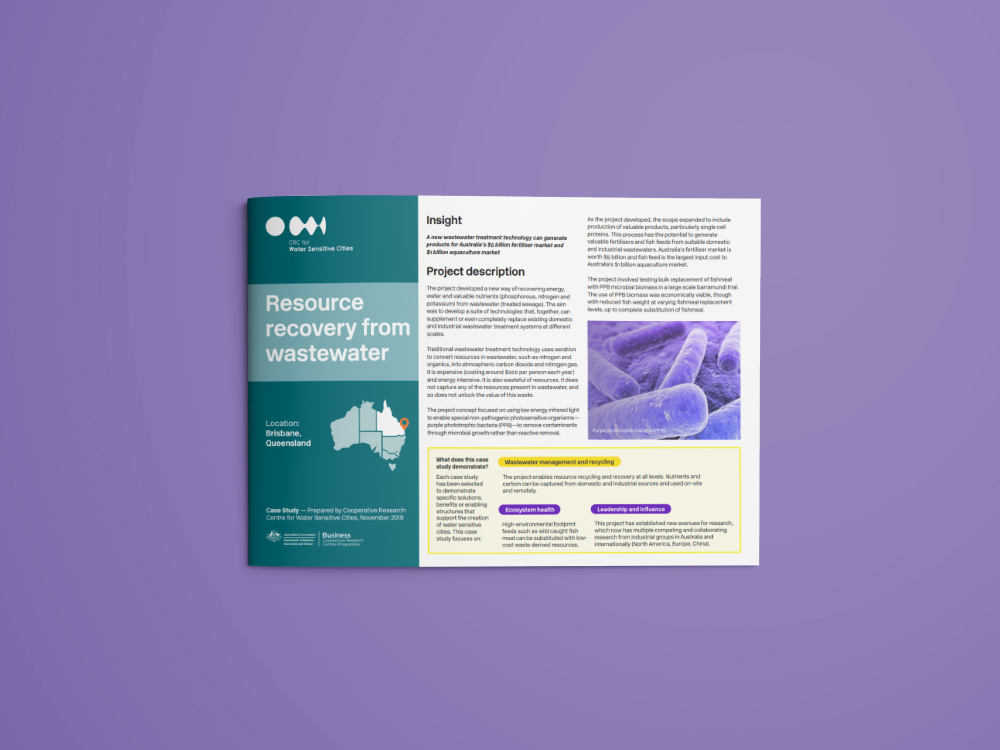Innovative idea becomes commercial reality
Our research into treating wastewater to extract valuable nutrients and save energy costs has resulted in a novel method for creating products for the lucrative fertiliser and fish feed industries, and more.
The back story
A team of researchers from UQ led the research for the CRCWSC’s Tranche 1 Project C2.1 Resource recovery from wastewater.
The original research aimed to develop a suite of technologies that together could supplement or even completely replace existing domestic and industrial wastewater treatment systems at different scales.
The project concept focused on using low energy infrared light to enable special non-pathogenic photosensitive organisms—purple phototrophic bacteria (PPB)—to remove contaminants through microbial growth.
It quickly became clear there was scope to produce valuable products from the PPB process, particularly single cell proteins. The project then tested bulk replacement of fishmeal with PPB microbial biomass in a large scale barramundi trial, which proved economically viable.
The success story
The exciting outcome is a new platform for resource recovery, rather than simply a new way to treat domestic wastewater. The team immediately used this bioproduction platform to generate novel products such as animal feeds, but it also has broad applicability to gas stream desulfurisation, and the generation of biopolymers, high value chemicals and biochemicals.
The research was published in Water Research, and we’re already seeing strong interest internationally, with groups in Spain, Belgium, Denmark, China, the USA and Canada all competing and collaborating with the UQ team. The process is being used across the waste production, wastewater treatment and food production sectors.
Further research is now occurring in the new Blue Economy CRC, which is investigating the generation of fish feed in remote areas.
